The gaps widen between the top 8 in all three doubles disciplines and pairs like Fukuman/Yonao as the All England points help the sixteen take shape.
By Don Hearn. Photos: Badmintonphoto
The recent All England Open Badminton Championships began with three doubles pairs in particular looking for results that could improve their chances of reaching the top eight so they could accompany their compatriots to the Rio Olympics. Instead, it seemed that all that happened was that the top 8 pairs – including three from Korea in men’s doubles and Chinese trios in women’s and mixed – merely consolidated their positions in the Race to Rio standings.
It is true that the Rio Race is far from over. For the top Asians, there are still four Superseries-level events and three Grand Prix Golds to go, while it is 3 and 4 respectively for the Europeans. Still, things have only gotten worse in 2016 for Mads Conrad Petersen / Mads Pieler Kolding (pictured above), Naoko Fukuman / Kurumi Yonao, and Shin Baek Cheol / Chae Yoo Jung.
The women’s doubles race was a very tight one when 2016 began. Korea and China each had two pairs in the top 8 and another pair or two knocking at the door. Still, the predictable surge by China’s Tian/Zhao and Tang/Yu has laid waste to the plans for Japan to have two representatives.
Naoko Fukuman/ Kurumi Yonao (pictured above) started the year in possession of the crucial 8th spot but despite increasing their point total by 6,000, distancing themselves from the third Japanese pair and overtaking the second-highest ranked Europeans, they are now more than 7,000 points off the pace.
The All England runner-up finish finally put Tang Yuanting and Yu Yang (pictured) in the top eight – and thus eligible to be selected for Rio in lieu of higher-ranked compatriots – and they still have one tournament in hand, while Tian/Zhao have two. That means that the Japanese pair will more than likely be chasing Korea’s pairs as the qualification period comes down to the wire.
Korea’s 3rd and 4th-ranked pairs, along with Japan’s 3rd, were only a few thousand points behind the top 8 in December but the best of them, Matsuo/Naito, are now 14,000 points off the mark, while Korea’s Chae/Kim have stopped playing completely.
Men’s doubles started the year with a bigger gap but it, too, has become even wider. Mads Conrad Petersen and Mads Pieler Kolding started with nearly 9,000 points between them and their 8th-ranked compatriots and although they have made up nearly half that amount, the top 8 pairs have all picked up the pace as well and the Danes are now more than 11,000 points behind and have even slipped to 11th spot.
Things are even more dire for the would-be second pairs from Malaysia and Indonesia. Pratama/Suwardi have improved but are still behind even the Danes. Koo/Tan of Malaysia at least have the potential to reel in their compatriots, even if getting both into the top 8 now seems nearly impossible.
The mixed doubles race looks the tightest, but only on the surface. Shin Baek Cheol / Chae Yoo Jung (pictured) have moved into 9th spot and are just 7,000 points behind All England runners-up Fischer Nielsen/Pedersen, but the Danes have some weak results to replace with their next outing and the Koreans have no hope of appearing in Rio until they can make a better showing in the Superseries.
What has changed in the past few months is that China seems far less likely to pile another pair into the top 8 in men’s or mixed doubles, as Li Junhui / Liu Yuchen and Lu Kai / Huang Yaqiong are now considerably down in the rankings.
Some cut-offs weaken, others strengthen
The above cases all concern Rio tickets effectively being redistributed from pairs in the top ten or close to it to pairs well down the ranking list. But with this BWF rule requiring pairs to be ranked in the top 8 in order to qualify as a second pair from a member association will weaken the doubles fields in Rio, another rule could well strengthen them.
Pairs going for continental spots can only earn such tickets if they are ranked within the top 50. If a continent has not such pair, that 16th spot will be reallocated, usually to a pair ranked in the top 30 or even 20.
At the beginning of the year, the only casualty of this rule was Oceanian men’s doubles but since then, the top African pair has been squeezed out of the top 50 and three pairs just ahead of them are set to surge ahead in the coming weeks. The same thing could happen in mixed doubles, where Kashkal/Hosny will be at best 47th after the Swiss Open and in danger from some European, Indonesian, and Oceanian pairs in the coming weeks.
Andries Malan / Willem Viljoen (pictured) of South Africa will also be down to 48th after Basel but there could be fewer men’s pairs poised to sneak into the top 50 ahead of them. In all three cases, there are no other African pairs currently in the top 50, nor are there likely to be replacements by May.
Another factor that might cause continental doubles spots to be reallocated is the limit of two continental spots per country. Australia is the only game in town for Oceania spots but their only sure bet is on mixed doubles. Chau/Serasinghe are still chasing the #50 spot so the continent’s men’s doubles ticket has already been re-allocated to Germany’s Fuchs/Schoettler. In addition, Mapasa Setyana is still waiting on administrative decisions on whether she will be able to accompany Gronya Somerville (pictured below) in representing Australia so soon after she immigrated from Indonesia.
This won’t happen for the Pan Am tickets. The United States is followed in all three disciplines by other neighbours within the top 50 and is not relying on continental spots in either singles discipline. What’s more, Eva Lee and Paula Lynn Obanana are currently the holders of the 15th women’s doubles spot, reallocated from the ineligible top Africans. It is unclear whether the BWF will consider this a continental spot or a case of qualifying outright but in the latter case, the U.S. will be free to send representatives in all five disciplines.
Should the Australian ladies not get the nod from the authorities, England’s Olver/Smith are the ones in a position to inherit the vacated spot. Meanwhile, if the top Africans slip in men’s and mixed, the beneficiaries could be Bodin Issara.
Issara and Savitree Amitrapai will be passing Labar/Lefel of France once points from the Swiss Open are added in and he will be the man in waiting in both disciplines if his performances in Basel haven’t already pushed him into position. The last non-continental mixed spot was recently taken up by Japan’s Ayane Kurihara / Kenta Kazuno, but they enjoy only a slight lead over Russia’s Durkin/Vislova.
More hope for singles hopefuls
The outlook is very different for singles players currently on the outside of the top 16 and looking in. Korea’s Lee Dong Keun, India’s Ajay Jayaram, and even Japan’s Sho Sasaki and Anthony Ginting of Indonesia are all still within striking distance of where they need to be to accompany their compatriots to Rio.
This is similarly true for Thailand’s Busanan Ongbamrungphan (pictured) and Porntip Buranaprasertsuk, both of whom are in the quarter-finals of the Swiss Open and intent on improving their standing as the Rio race goes into the home stretch. In contrast, the situation is precarious for Korea’s Bae Yeon Ju, who is still sitting at #15 and in position to accompany Sung Ji Hyun to the Olympics again but she has half a dozen talented players threatening to nudge her out of contention.
Both disciplines have a cluster of players around that #16 cut-off who are currently separated by about 6,000 points. Meanwhile, China has three in the top 16 of both singles categories with Wang Zhengming and Sun Yu waiting in the wings to complicate things. Hong Kong also has three men and Japan has a whopping five women, meaning that their coaches have plenty of choice when it comes to their Olympic singles contingents.
Singles plus one
Things are also interesting near the bottom of the singles tables. For starters, the new BWF Rio tables appear to have a slight flaw. While they have re-allocated spots from Michael Fuchs, Phillip Chew, Zhang Nan, Zhao Yunlei, Christinna Pedersen, and Selena Piek having qualified in multiple categories, they have not re-allocated the host country spots from Brazil having players who have qualified outright in both men’s and women’s singles. This means that each singles event should have 38 qualifiers, so Martin Giuffre of Canada and Ireland’s Chloe Magee (pictured) are also already pencilled in.
In fact, the women’s list just grew recently when Zhao Yunlei moved into the top 8 and this sort of thing can keep happening. Ko Sung Hyun is very close to overtaking his compatriots in men’s doubles and freeing up a men’s spot, Bodin Issara could take two spots this week, or he could take just one from Michael Fuchs and end up shrinking the men’s singles draw slightly.
Toby Ng and Alex Bruce (pictured below) won the recent Brazil International and thus made up some ground on Phillip Chew and Jamie Subandhi. This race for the Pan Am mixed spot, may yet take its toll on Ng/Bruce’s compatriot Giuffre but there are many more factors and many more results that will affect that outcome.
As for the women, one dark horse to take a second ticket is Thailand’s Sapsiree Taerattanachai. She and Puttita Supajirakul have already overtaken their compatriots in women’s doubles and while she and Dechapol Puavaranukroh (pictured bottom) are well down in the mixed standings, they have 3 tournaments in hand, have just upset the World Championship runners-up to reach the quarter-finals of the Swiss Open, and may well eat up the 14,000-point gap in the coming weeks.
Finally, the Oceania singles spots may well end up unused. Wendy Chen will likely be sent if Australia’s women’s doubles pair is deemed ineligible but if Australia is able to use its continental spots for their two doubles pairs, Oceania will only be represented in singles if New Zealand reverses its historical policy or if the BWF invites Tongan or New Caledonian players from hundreds of rungs down in the rankings.
The home stretch
Including the ongoing Swiss Open, there are seven weeks left in the Rio qualifying period. The top 8 in doubles have already accumulated more points that their counterparts had in May of 2012 but many of the top pairs are taking off one of the two Grand Prix Gold weeks before gearing up for the last Superseries sweep prior to the final point tally.
![RACE TO RIO – Trios and quartets crowd out seconds The gaps widen between the top 8 in all three doubles disciplines and pairs like Fukuman/Yonao as the All England points help the sixteen take shape. By Don Hearn. Photos: […]](https://www.badzine.net/wp-content/uploads/Newsflash-thumbnail.png)
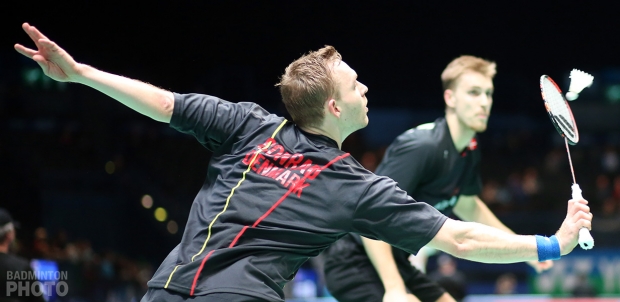
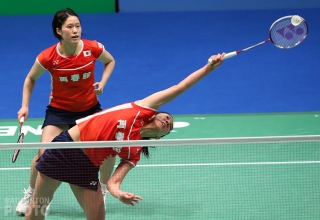
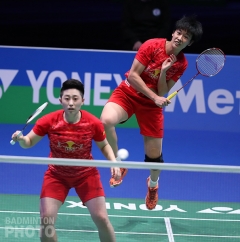
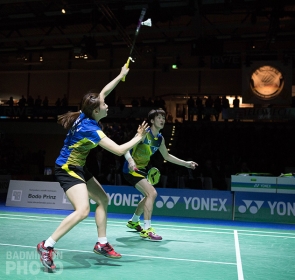
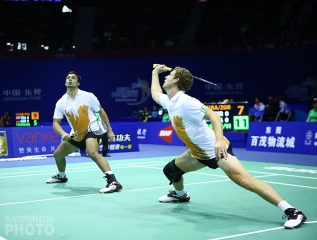
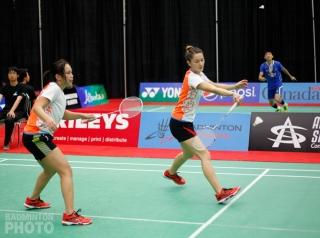
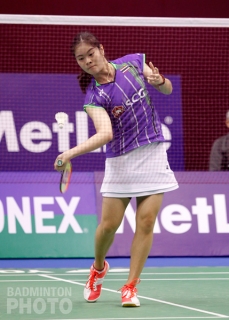
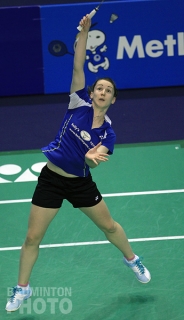
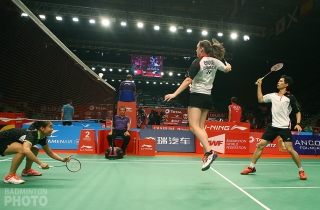


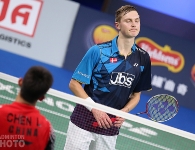

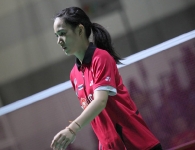
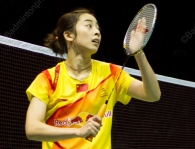
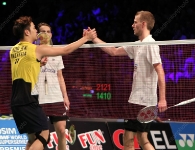

Leave a Reply